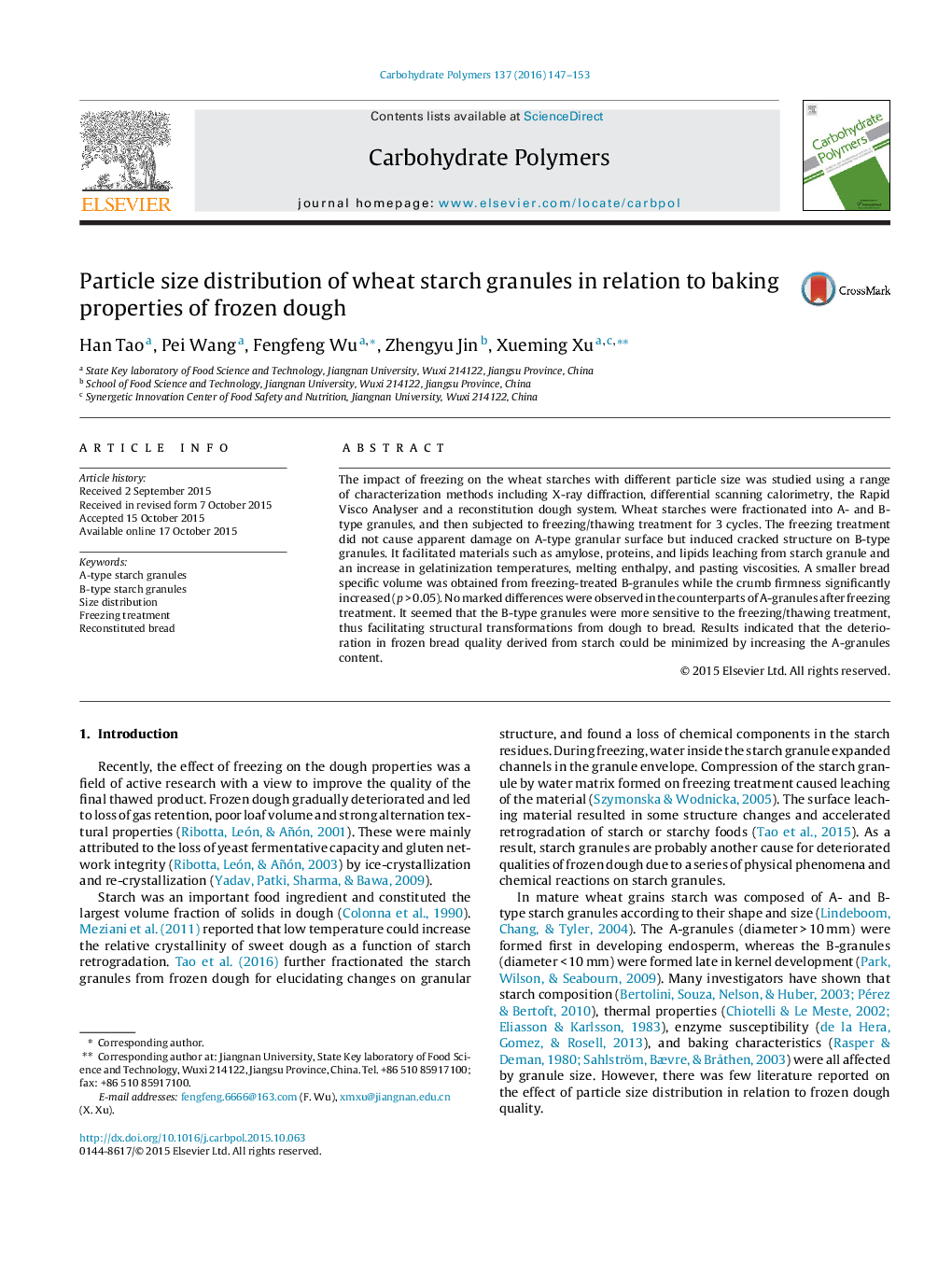| Article ID | Journal | Published Year | Pages | File Type |
|---|---|---|---|---|
| 1383150 | Carbohydrate Polymers | 2016 | 7 Pages |
•Freezing resulted in dissociation of amylose-lipids and proteins leaching for B-granules.•Freezing increased the gelatinization temperatures, enthalpy, and paste viscosities.•Bread made with frozen B-granules had a smaller specific volume and firmer crumb texture.•B-granules were more sensitive to the freezing/thawing treatment than A-granules were.
The impact of freezing on the wheat starches with different particle size was studied using a range of characterization methods including X-ray diffraction, differential scanning calorimetry, the Rapid Visco Analyser and a reconstitution dough system. Wheat starches were fractionated into A- and B-type granules, and then subjected to freezing/thawing treatment for 3 cycles. The freezing treatment did not cause apparent damage on A-type granular surface but induced cracked structure on B-type granules. It facilitated materials such as amylose, proteins, and lipids leaching from starch granule and an increase in gelatinization temperatures, melting enthalpy, and pasting viscosities. A smaller bread specific volume was obtained from freezing-treated B-granules while the crumb firmness significantly increased (p > 0.05). No marked differences were observed in the counterparts of A-granules after freezing treatment. It seemed that the B-type granules were more sensitive to the freezing/thawing treatment, thus facilitating structural transformations from dough to bread. Results indicated that the deterioration in frozen bread quality derived from starch could be minimized by increasing the A-granules content.
